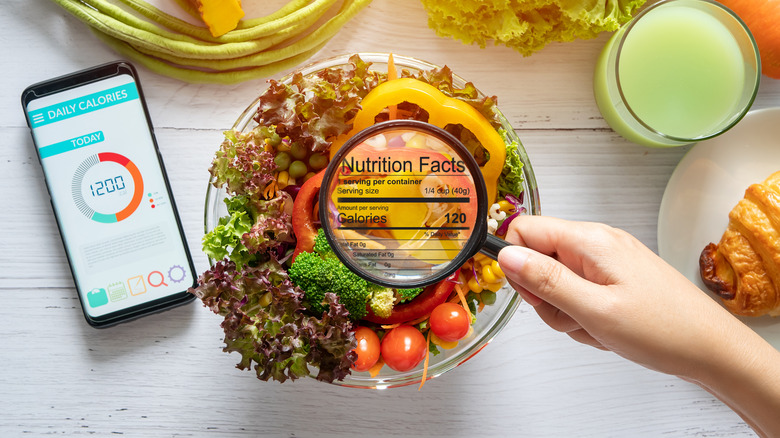What Does The Serving Size On Nutrition Labels Mean?
When you go grocery shopping, you will come across Nutrition Facts labels. It provides nutritional information about the food you are eating so you can make informed decisions about your diet. Citizens of the United States can view certain nutritional guidelines to learn more about what to eat, according to the Dietary Guidelines for Americans.
The label we now see on food became standardized after the passage of the Nutrition Labeling and Education Act of 1990 (NLEA), reports the USDA Economic Research Service. The label includes nutrients, calories, vitamins and minerals, and the serving size, notes the U.S. Food & Drug Administration (FDA).
The serving size is potentially the most confusing part of the Nutrition Facts label because many people believe it to be a recommendation of how much to eat of that particular food, according to PopSugar. However, this is not the case. So if the serving size is not a recommendation, then what does it mean?
The serving size is the average amount someone eats of a food in one sitting
The first number you will probably see when reading the Nutrition Facts label is the serving size. Written out as "X servings per container," this shows the numbers of servings in the package, whether that's a pint of ice cream, loaf of bread, or anything else. Provided in familiar units and metric amounts, such as cups and grams, a serving size refers to the average amount that people typically eat or drink in one sitting, according to the FDA.
The serving size helps people manage food consumption by understanding how many calories and nutrients they are eating. If you have a food scale at home, you can use the serving size information to measure your caloric consumption, according to PopSugar. Since a Nutrition Facts label also shows the minerals, vitamins, and nutritional information, you can also do a little math to figure out the amount of nutrients you will be getting.


